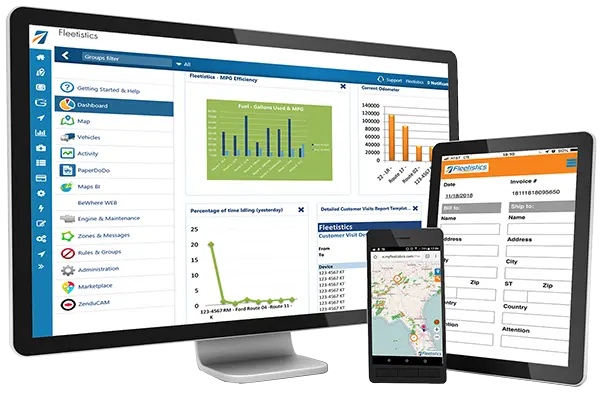Navigating the U.S. Labor Department’s New Independent Contractor Rules: A Guide for Motor Carriers.
In a landscape of evolving regulations, motor carriers must stay vigilant to ensure compliance with the latest guidelines from the U.S. Department of Labor. The recent updates to independent contractor rules have sparked discussions and raised questions among motor carriers regarding the classification of drivers as “employees” or “independent contractors” under the Fair Labor Standards Act (FLSA). Here’s what motor carriers should know about these changes and how to navigate the new legal landscape effectively.

What Has Changed?
The U.S. Labor Department’s new independent contractor rules introduce a six-factor “economic realities test” to determine whether a worker is an independent contractor or an employee. This test evaluates the following factors:
- Nature and Degree of Control: Examines how much control the motor carrier exerts over the driver’s work, including scheduling, routes, and equipment usage.
- Opportunity for Profit or Loss: Considers whether the driver has the opportunity to profit from their work and bears the risk of financial loss.
- Investment in Facilities or Equipment: Looks at whether the driver has invested in their own equipment or facilities used for work.
- Skill and Initiative: Assesses the level of skill and initiative required to perform the work.
- Permanence of the Relationship: Considers the duration and permanence of the working relationship between the motor carrier and the driver.
- Integration into the Business: Examines how integral the driver’s work is to the motor carrier’s business operations.
What Hasn’t Changed?
While the new rules introduce the economic realities test, they still emphasize the importance of accurately classifying workers. Misclassifying employees as independent contractors can lead to legal consequences, including penalties and back pay obligations.
The Good and the Bad
The updated rules offer some clarity on the factors considered in determining independent contractor status. However, they also bring challenges, as meeting all criteria for independent contractor classification can be complex and may vary depending on specific circumstances.
Impact on Misclassification Claims
The new rules could impact independent contractor misclassification claims. Motor carriers must ensure that their classification decisions align with the economic realities test to minimize the risk of legal disputes.
Defending Your Independent Contractor Program
To defend against misclassification claims, motor carriers should:
- Maintain clear and consistent policies for classifying workers.
- Document the factors used to determine independent contractor status.
- Provide training to managers and supervisors on proper classification practices.
- Regularly review and update classification decisions based on changing circumstances.
Do’s and Don’ts
Do:
- Conduct regular audits of independent contractor relationships.
- Consult legal and HR professionals for guidance on classification issues.
- Communicate openly and transparently with drivers about their classification status.
Don’t:
- Misclassify employees to avoid payroll taxes or other obligations.
- Assume that past classification decisions are always accurate.
- Ignore changes in federal or state regulations related to worker classification.
Conclusion
In conclusion, motor carriers must stay informed about the U.S. Labor Department’s new independent contractor rules and proactively assess their classification practices. By understanding the economic realities test, implementing best practices, and seeking legal guidance when needed, motor carriers can navigate the complexities of worker classification and mitigate potential risks.














